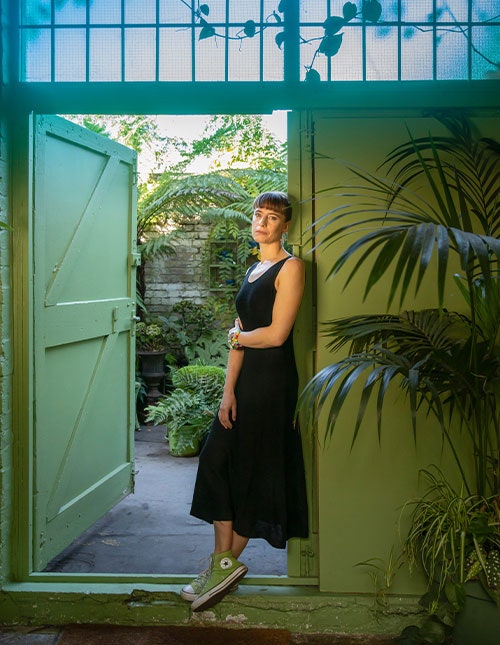But attribution science can do a lot more than tell us how climate change influences the weather. Otto wants to use her attribution reports to hold polluters to account for extreme weather events. “We have started to do a lot of work with lawyers, to basically bridge this knowledge gap between what we can say scientifically and what has so far been used in terms of evidence,” she says. With legal cases underway in Germany and Brazil, attribution science is moving into the courtroom.
OTTO COFOUNDED World Weather Attribution in 2014 with the oceanographer Heidi Cullen and climatologist Geert Jan van Oldenborgh. At first, Otto—who has degrees in physics and philosophy—thought that the main role of weather attribution was to untangle the complexity of weather systems to quantify how much climate change was influencing extreme weather. Other scientists had established how to use climate models to attribute weather events to climate change, but no one had tried to use the science to produce rapid reports on recent disasters.
World Weather Attribution’s first real-time study was published in July 2015. It found that a heat wave in Europe earlier that month was almost certainly made more likely thanks to climate change. Other studies followed on floods, storms, and rainfall, each one published within weeks of the disaster. But attribution studies aren’t just about understanding past events—they can help us prepare for the future, Otto says. “I see attribution now as a tool that helps us disentangle drivers of disasters and helps us use extreme events as a lens in society to see where we are vulnerable.”
Pakistan’s devastating 2022 monsoon season is one example of this. Otto and her colleagues agonized over the wording of their report, as there were so few similar events in the historical records that their models struggled to simulate the extreme rainfall accurately. They knew that rainfall in the area was much more intense than in the past, but they couldn’t put a firm number on how much of that increase was due to climate change. “It could be that all of it is climate change, but it could be that [the role of] climate change is much smaller,” Otto says. Even though the cause couldn’t be pinpointed, the report highlighted just how vulnerable Pakistan is to severe flooding, highlighting the proximity of farms and homes to flood plains, poor river management systems, and poverty as major risk factors. “Vulnerability is what makes the difference between an event having basically no impact or it being a catastrophe,” says Otto.
World Weather Attribution’s work tends to make headlines when it concludes that climate change makes extreme weather more likely, but the opposite result can be even more useful to regions facing disasters. One investigation into a long drought in southern Madagascar found that the chance of low rainfall hadn’t significantly increased due to human-induced climate change. Knowing this gives agency back to countries, says Otto. “If you think it’s all to do with climate change, then there’s nothing you can do unless the global community gets its act together. But if you know that climate change is not actually playing a big role, or none at all, then that means everything you do to reduce your vulnerability actually makes a huge difference.”
Photograph: Maria Lax
IT’S NOT ONLY governments that are extremely interested in the results of attribution studies. Courts are starting to pay attention, too. In August 2021, an Australian court ruled that the New South Wales Environment Protection Agency had not fulfilled its duty to protect the environment from climate change, in a case brought by bushfire survivors. One of Otto’s attribution studies into the 2019-20 bushfire season was used in a report commissioned by the court, but she found out about it only when one of the lawyers involved in the case emailed her after the verdict had been declared. “This is really nice to see, when a study that we did has real-world impact,” she says.
If attribution studies can tell us that a disaster was made more severe because of climate change, they also point toward something else: Who might be held responsible. Richard Heede, a geographer from California, has spent decades delving through archives to estimate companies’ carbon emissions all the way back to before the Industrial Revolution. The result is known as the Carbon Majors: a database of the world’s biggest polluters up to the present moment. The 2017 Carbon Majors report found that half of all industrial emissions since 1988 could be traced to just 25 corporate or state-owned entities. The state-owned fossil fuel firm Saudi Aramco alone is responsible for 4.5 percent of the world’s industrial greenhouse gas emissions between 1988 and 2015.



